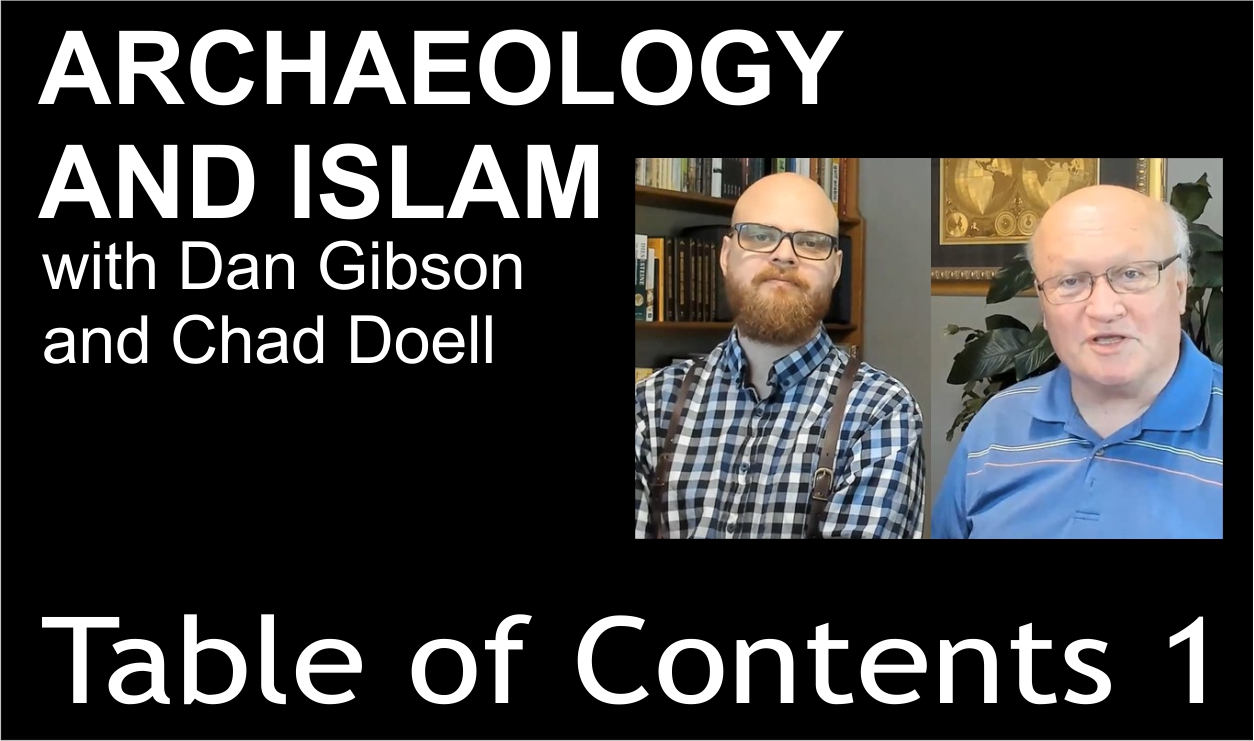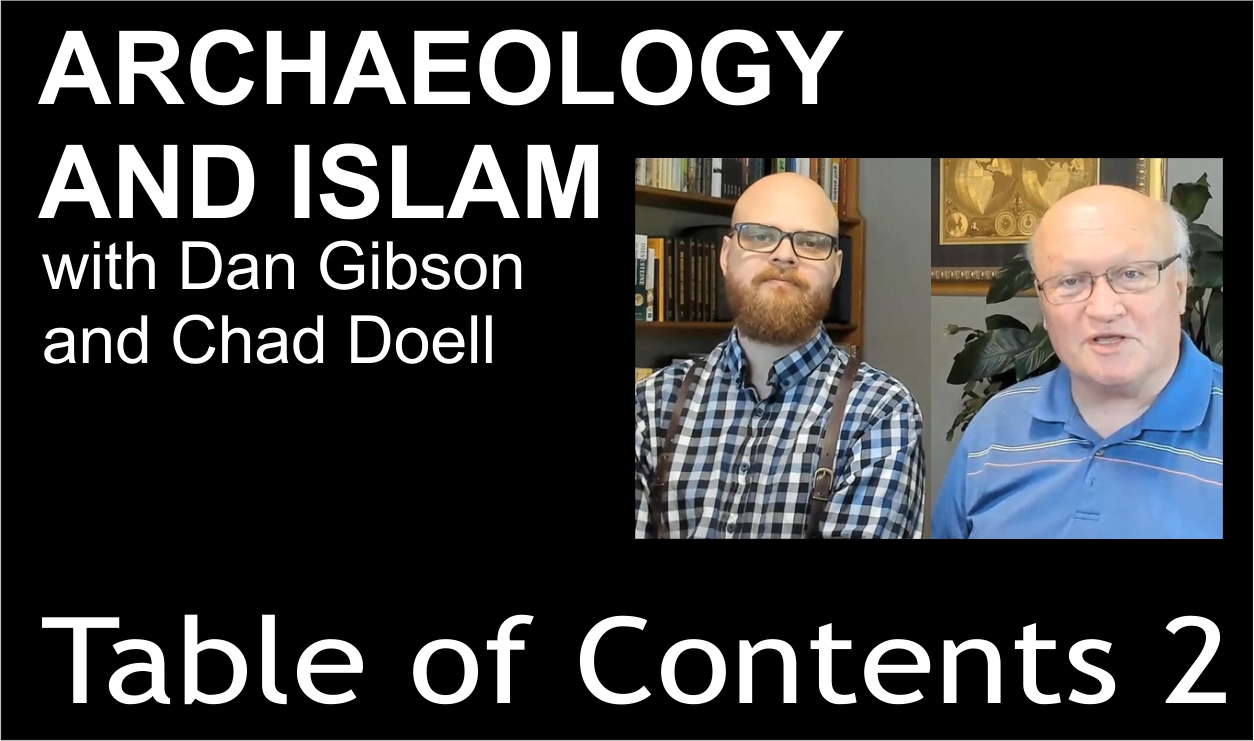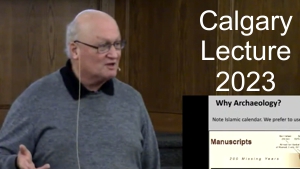Video Contents
When people discover Dan Gibson’s research, they often wonder how it all began. How could it be that a subject as antiquated as the first places of prayer of Islam could provide such a new and provocative field of research?
The first answer is that Dan did not go hunting for a qibla breakthrough. As Dan lived in the Middle East and visited early mosques, he would often be told by the locals that “this mosque does not face Mecca. This mosque faces Jerusalem.” So too, Chad Doell, in his archaeological studies in the Middle East, was told by his professor that mosque ruins which clearly did not face Mecca in Saudi Arabia simply faced Jerusalem.
Dan heard this explanation so many times that it began to pose a problem for him. If the earliest Muslims prayed toward “sham,” or the north, for only the first year and a half after they reached Medina, how could all these mosques, spread as far as Oman, have been built in those 15 months? As Dan encountered more mosques, it began to appear to him that the traditional explanation was lacking.
It was not until 2000 that Dan acquired a tool which would enable him to begin to measure the qiblas of these places of prayer: a rudimentary GPS. He simply wanted to know which direction the mosque was facing. He was not aware that the answer would consume his professional life for years to come.
Some of these mosques did suit the Jerusalem explanation. Many of them did not. They were simply too far off the be plausible, so Dan began to plot their directions on a map.
Coincidentally, at the same time, Dan was regularly taking archaeology students and professors to Petra in Jordan. He would use these opportunities to learn as much as he could about the archaeology of the region.
As he plotted mosques and talked with archaeologists, he began to suspect some of the early mosques were facing the city of Petra.
Dan was aware of a theory, proposed by Patricia Crone and others, which suggested that Islam started in Northern Arabia. As he gathered data, he began to agree, and found he could locate the birthplace of Islam as Petra in Jordan.
While teaching at a college in Holland, Dan spent his free time poring over Ibn Ishaq’s Sirat Rasul Allah. As he read this important historical text, he paid attention to how the history dawning years of Islam fit into the world of Northern Arabia. To Dan’s mind, having lived in the area and knowing the geography, the story fit indeed.
Things also seemed to fit when Dan read the relevant histories of al-Tabari. As he worked his way through the volumes of the seminal scholar’s Islamic history, Dan underlined geographical information and made notes to see if he could reconcile these records with the Petra theory. Much of Dan’s recent work is a consequence of this research.
As Dan was developing his theory, he published his first book on the subject in 2011, Qur’anic Geography, only briefly mentioning his Petra/Mecca findings, and hoping to gather feedback from friends and colleagues.
By 2017 his database had grown, which had only strengthened his theory of a Petran birth of Islam. Dan published his findings in a second book, Early Islamic Qiblas: A survey of mosques built between 1 AH/622 C.E. and 263 AH/876 C.E.
As Dan’s database grew he was better able to detect patterns in early qiblas. What he found was that qibla history was not as simple as a transition from Petra in Jordan to Mecca in Saudi Arabia. For example, Dan discovered what he has called the Parallel Qibla in North Africa.
There are over 40 relevant North African and Spanish mosques. Dan began to study them as satellite imagery became available, enabling him to make the basic qibla measurements without needing to stand by the mosque with a GPS. As such, Dan was able to quickly measure and catalogue mosques as he became aware of them. When he plotted the coordinates that he was collecting onto a map, he observed that most of these mosques appear to have adopted a qibla parallel to the degree at which the Ka’ba in Mecca faces Petra.
The Parallel Qibla was in use for an extended period. The latest mosque which adopted this qibla that Dan has found is the Grand Mosque of Tangier, which was constructed in 1196 CE, almost 600 years after the founding of Islam.
As Dan’s database grew and he plotted mosque orientations onto a map, he noticed a transition qibla between the Petra and Mecca qiblas. This he aptly called the Between Qibla.
Dan was startled by this discovery and sought a possible origin for this unlikely qibla. He found that the first mosque to adopt this qibla was the aptly named Wasit Mosque, which means between or middle in Arabic. After Wasit, Dan has categorized nearly 60 mosques as between mosques across the Middle East and Asia, facing a nebulous place between Petra and Mecca in the desert of Saudi Arabia.
Written evidence is hard to find for early qiblas because the histories were written after the qibla controversy was largely settled. But, in the case of the Between Qibla, we are told by the 9th century writer al-Jāhiz that among the many misdeeds of caliph Walid I and his family, the setting of the Wāsiṭ qibla was among them.
The Yamama mosque presents a useful example of the Between Qibla. The Yamama mosque is in the heart of Arabia, almost due east of Medina, yet it faces away from Mecca. Instead of facing Mecca to the southwest, it’s directed to the northwest to adopt the between position. Some may argue of other Between mosques that maybe the builders constructed the mosques wrong and were off by a few degrees. In the case of Yamama, it is very difficult to believe that its northwest direction is a simple error. It is emphatically directed away from Mecca, and its alignment corresponds with the orientation of dozens of other Between mosques.
The search for the first Meccan mosque presented its own challenges. Clearly all modern mosques adopt Mecca as the qibla. To understand his theory, Gibson needed to try to find out when Mecca was adopted. For quite some time, the earliest mosque Gibson could find with a clear Meccan qibla was in distant Pakistan, which was unhelpful.
Finally other researchers began to produce mosque databases. Dan followed the work of Syrian, Israeli, and Jordanian scholars who were cataloguing ancient mosques and archaeological sites. With their work at hand, Dan found an earlier qibla, built by caliph Walid 88 years after the founding of Islam. This building which adopted this qibla was not a mosque, but a qasr or manor house called Jebal Says. The entire complex was directed toward Mecca.
To make this evidence even more compelling, Jebal Says is surrounded by other qasrs with other qiblas. There are pre-Islamic qasrs without qiblas, early Islamic qasrs with Petra-facing qiblas, later qasrs with between qiblas, and finally the prominent qasr built by caliph Walid which faces Mecca—the oldest structure we have found thus far with a clear Meccan qibla.
This mosque was constructed 15 years after the Second Civil War, when Gibson theorizes the Black Stone was likely moved from Petra to Mecca.
One of the major goals of Gibson’s latest book, Let the Stones Speak, is to provide historical context for these archaeological shifts in qibla orientation. It can be difficult to conceive of how such a transition would even be possible—but the data needs to be explained. The stones are not lying.
Dan is still adding mosques to his database. He has benefited greatly from the work of others who make him aware of early mosques and help him to check GPS coordinates. He is always looking for more people to be involved and has been greatly encouraged by the enthusiasm of his supporters.










Page Discussion
Membership is required to comment. Membership is free of charge and available to everyone over the age of 16. Just click SignUp, or make a comment below. You will need a user name and a password. The system will automatically send a code to your email address. It should arrive in a few minutes. Enter the code, and you are finished.
Members who post adverts or use inappropriate language or make disrespectful comments will have their membership removed and be barred from the site. By becoming a member you agree to our Terms of Use and our Privacy, Cookies & Ad Policies. Remember that we will never, under any circumstances, sell or give your email address or private information to anyone unless required by law. Please keep your comments on topic. Thanks!